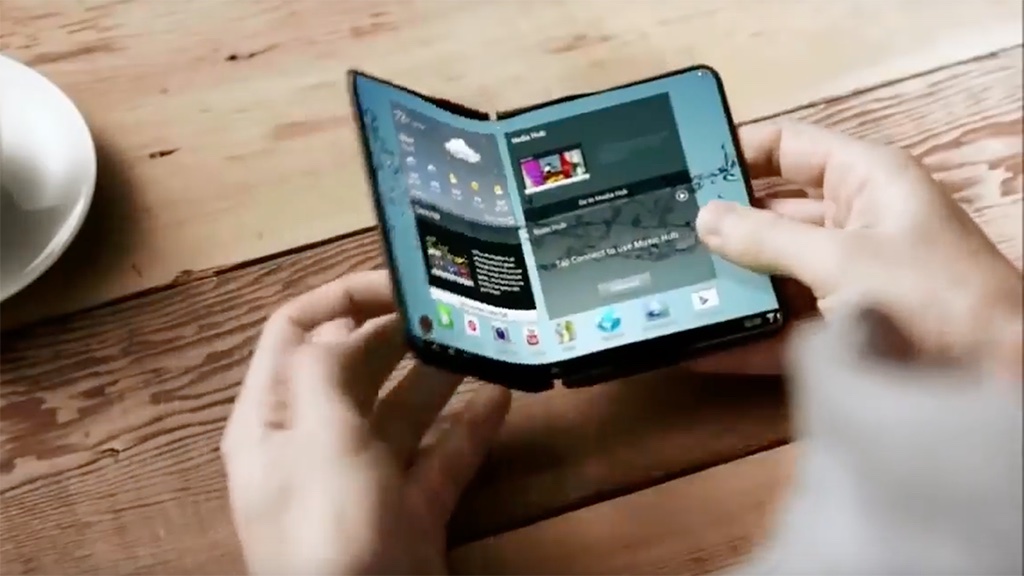The smartphone market is continuously experiencing growth and change, despite an overall level of saturation, with devices offering an increasing number of transformative features as vendors seek to improve replacement cycles.
Features such as fingerprint on display and multiple cameras are starting to enter the market, while others such as foldable displays and 5G are due to appear next year, all of which are expected to experience significant growth in market penetration. ABI Research (www.abiresearch.com) , a market-foresight advisory firm providing strategic guidance on the most compelling transformative technologies, forecasts that over 248 million smartphones will ship with a foldable display in 2027 and over 1.4 billion smartphones will ship with 5G capabilities.
“The smartphone market has seen a large amount of technological development over previous years, which is expected to continue moving forward,” says Stephanie Lawrence, research analyst at ABI Research. “In order for vendors to offer smartphones that stand out while creating differentiation, they must continue to develop and offer new transformative features that provide consumers with new, unique and innovative ways in which to interact with their devices. Advanced features such as smart biometrics, multiple cameras, foldable displays, and 5G will totally transform how we interact with, and use, our smartphone.”
Smart biometrics refers to the individual human characteristics that are used to enable authentication and access to applications, such as facial recognition, iris scanning, voice AI, vein recognition, and fingerprint on display (FOD). FOD offers improved fingerprint scanning capabilities and is beginning to enter the smartphone market, notably on devices such as Vivo’s X20 Plus UD, Xiaomi’s Mi 8 Explorer Edition, and Huawei’s Porsche Design Mate RS. FOD will increase in popularity between 2018 and 2027 – over 553 million smartphones will feature the technology by 2027, predicts ABI Research.
Dual-cameras help to provide better quality photographs, often with one sensor providing the main image and the other providing the extra detail at a slightly different angle. They have found their way into an increasing number of smartphones, most recently Apple’s iPhone X, Samsung’s Galaxy S9 and Note 8, Xiaomi’s Note 5, and LG’s V30.
Most commonly, these dual-cameras are found on the rear of the phone; however, LG’s V30 also features dual front cameras. The first smartphone with three rear camera sensors (40MP color, 20MP monochrome, and 8MP zoom lenses) was released in March 2018—Huawei’s P20 Pro. Multiple cameras will continue to find their way into smartphones, with vendors launching flagship cameras with the technology, according to ABI Research.
Foldable displays will appear on the smartphone market in 2019, most notably via the rumored Samsung’s Galaxy “X”, followed by Motorola’s new RAZR. This feature enables devices to have a large tablet-like screen on a small device form factor. This will improve the overall user experience since multiple apps can be open, and usable, simultaneously on each side of the screen.
Foldable displays allow each app to take up a significant amount of space, making each app more readable and recognizable. The current lack of smartphones with a foldable display can be put down to the complex manufacturing processes involved and the requirement for the device to be able to withstand the wear and tear of everyday use. However, by 2027, most major vendors will have launched a device with the functionality and it is expected that over 248 million smartphones will ship with a foldable, or flexible, display, according to ABI Research.
5G will also appear in 2019, experiencing large growth as a key driver for device migration, to become the connectivity standard for most smartphones by 2025. This is due to its ability to offer an enhanced wireless broadband connectivity experience, improving not only the speed, but also the connectivity, diverting users away from public Wi-Fi while increasing video call and video streaming quality, AR experiences, and instantaneous cloud connections, says ABI Research.
Image courtesy of Alpha

